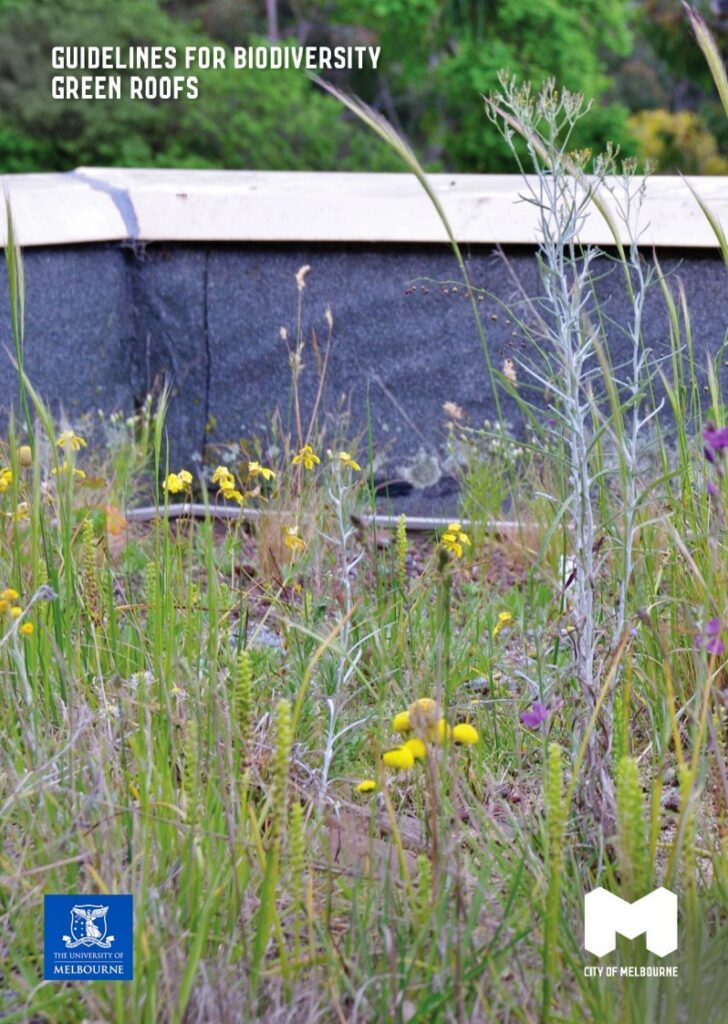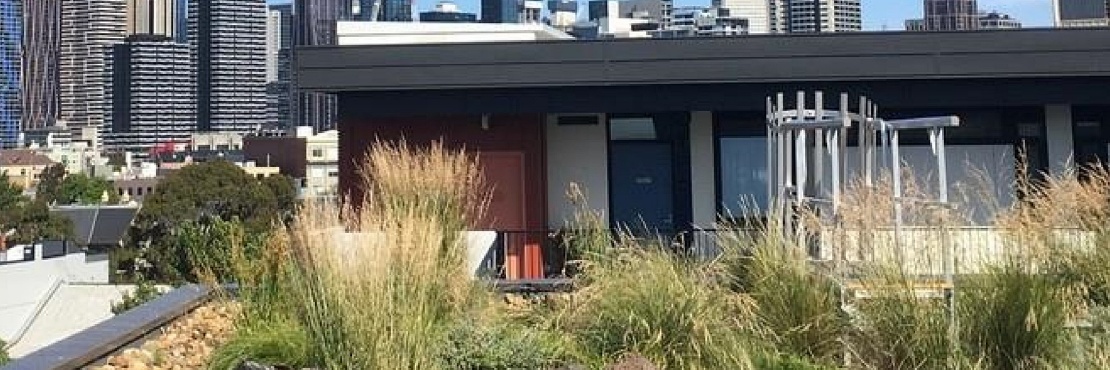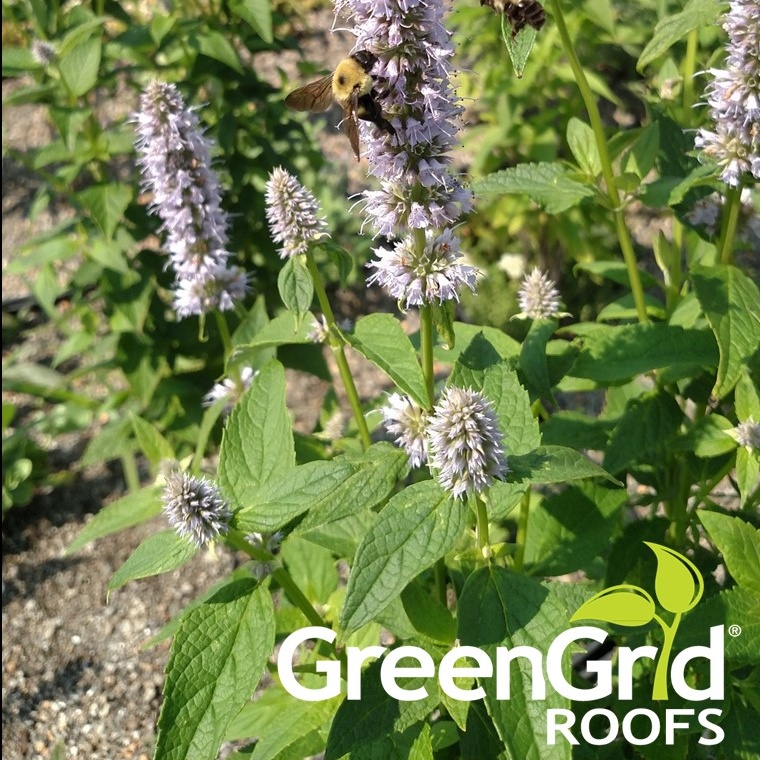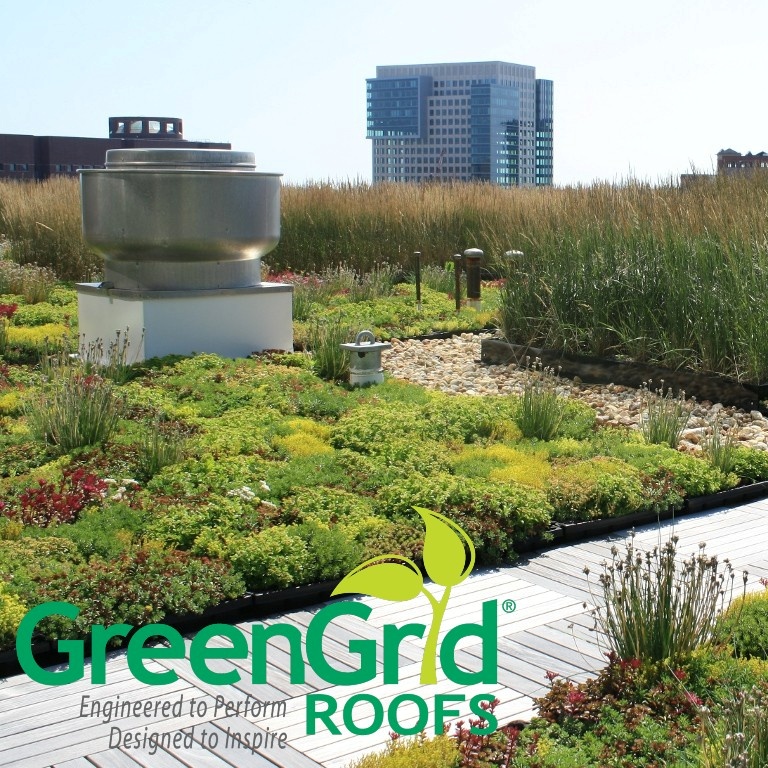Staff of City of Melbourne & University of Melbourne writes:
Australia is one of the most urbanised countries in the world, and the major cities are experiencing rapid population growth and increasing densification. It is estimated that by 2056 about 80% of Victoria’s population will live in Greater Melbourne. Urbanisation increases the cover of impervious surfaces (i.e. buildings, streets) at the cost of native vegetation and green spaces. This is concerning due to the resulting loss of biodiversity and associated ecosystem services. Urban nature is also essential for human health and well-being. Positive and more frequent people-nature experiences can help increase awareness of and affinity for biodiversity conservation issues, both within the city and outside urban areas.
Green roofs are a novel engineered ecosystem that can help to address this need
The ‘Guidelines for Biodiversity Green Roofs’ has been developed to provide advice to building owners, landscape architects, landscape construction contractors and horticulturalists wanting to design and build a green roof that has a primary purpose as provision of habitat for biodiversity.
 In this document, explanations for the characteristics of green roofs known to influence their biodiversity habitat value, provide an evidenced-based overview of the fauna taxa known to live on and utilise green roofs, detail green roof design elements known to be important for fauna and suggest some Victorian habitat templates and plant traits to guide green roof plant selection. To guide the design of future biodiversity green roofs in Melbourne, a list of suitable plants has been compiled, comprising mostly native plant species known to grow successfully on green roofs, the biodiversity resources they can provide and fauna taxa recorded using them.
In this document, explanations for the characteristics of green roofs known to influence their biodiversity habitat value, provide an evidenced-based overview of the fauna taxa known to live on and utilise green roofs, detail green roof design elements known to be important for fauna and suggest some Victorian habitat templates and plant traits to guide green roof plant selection. To guide the design of future biodiversity green roofs in Melbourne, a list of suitable plants has been compiled, comprising mostly native plant species known to grow successfully on green roofs, the biodiversity resources they can provide and fauna taxa recorded using them.
Green roofs can have many benefits: stormwater retention, building cooling, building energy savings, improved microclimate with potential to mitigate the urban heat island (UHI) effect, well-being, and biodiversity benefits. In regions with seasonally hot and dry climates, such as much of southern Australia, maintaining a successful green roof can be challenging due to harsh climatic conditions during summer months.
In the last decade, researchers and the green roof industry have developed green roof substrates, designs and plant palettes that successfully withstand the Australian climate. This foundation now allows green roofs to be designed to perform specific functions such as cooling, maximising stormwater retention or improving urban biodiversity. However, the interactions with biodiversity and green roofs in Australia is not well known and very few Australian green roofs are designed specifically to improve urban biodiversity habitat. In Melbourne, most of the green roofs built to date have been accessible green roofs designed to provide amenity spaces for apartments, office buildings or hospitals.
A green roof’s location within the landscape can also play an important role for animal movement and plant dispersal. Green roofs can be used as habitat stepping-stones by a variety of mobile fauna, such as birds, bats, bees, carabid beetles, spiders and weevils to move through the urban landscape. They can improve the ecological connectivity of cities, providing links between large, urban green spaces of greater biodiversity value (i.e. parks, gardens, cemeteries, wetlands). Moreover, green roofs with a native planting palette have the potential to seed species into adjacent areas allowing them to colonise parts of the city where native vegetation has become scarce.
Source: Schiller, J., Rayner, J.P. and Williams, N.S.G. (2023) Guidelines for Biodiversity Green Roofs. Report for the City of Melbourne.
Read more: Guidelines for Biodiversity Green Roofs
 Greenroofs.comConnecting the Planet + Living Architecture
Greenroofs.comConnecting the Planet + Living Architecture









